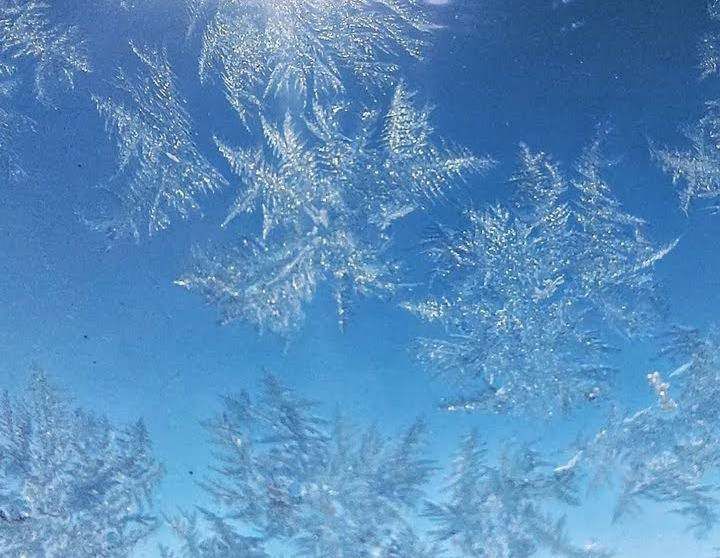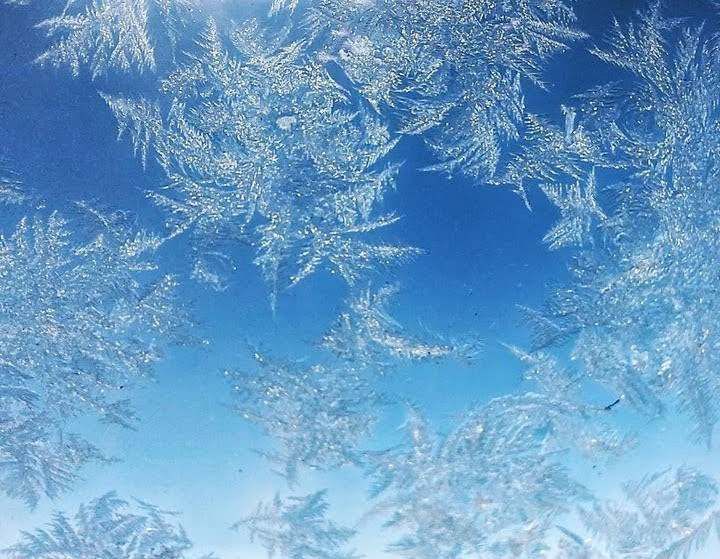
Nella primavera del 1505, mentre si trovava a Firenze, Leonardo da Vinci decise di scrivere un articolo sulla teoria del volo, con l'obiettivo di creare una macchina che potesse far volare una persona nel cielo, in modo che la neve non fosse e luoghi caldi, lontani. dalla cima della montagna. Insomma, all'inizio del Rinascimento, uno dei più grandi geni del mondo credeva che la cosa migliore e più utile del mulino a vento fosse quella di prendere la neve dalle montagne e portarla d'estate in pianura. Al di là dell'ambizioso progetto del grande design toscano, che, come sappiamo, non verrà realizzato, questo episodio ci mostra come la questione della neve raggiunga ormai un'esigenza economica molto rilevante; non solo, ma ci mostra anche come la logistica sia la parte più importante e critica di questo business.
In the spring of 1505, while he was in Florence, Leonardo da Vinci decided to write a paper on the theory of flight, with the goal of creating a machine that could fly a person through the sky, so that the snow was not and warm places, far away. from the top of the mountain. In short, at the beginning of the Renaissance, one of the world's greatest geniuses believed that the best and most useful thing about the windmill was to take snow from the mountains and bring it in summer to the plains. Beyond the ambitious project of the great Tuscan designer, which, as we know, will not be realized, this episode shows us how the issue of snow now reaches a very relevant economic need; not only that, but it also shows us how logistics is the most important and critical part of this business.

È chiaro che finché la domanda di neve è molto elevata nelle zone dove viene fornita e quindi, per quanto possibile, vicina ai mercati in uscita, l'arma è forte, ma tutto ha capacità di gestire le polizze assicurative. tempo. tempo. Inoltre, se la domanda è bassa e non vi è un grande impatto sul prezzo, possiamo anche avere una grande perdita di merce durante il trasporto, poiché il prezzo di vendita finale sarà in grado di ripagare questa perdita. Ma gli operatori si sono presto resi conto che la domanda poteva essere elevata e per questo motivo il controllo dei costi e la sicurezza dell'approvvigionamento sono diventati strategici. Qui è importante continuare a fornire la neve e il ghiaccio, che si trovano in luoghi sempre più lontani dalle città, diventano l'obiettivo principale e, quindi, il problema di come non perdere i prodotti durante il viaggio o durante lo stoccaggio è diventato il più importante tenace.
It is clear that as long as the demand for snow is very high in the areas where it is supplied and therefore, as close as possible to the outbound markets, the weapon is strong, but everything has capacity to handle insurance policies. time. time. In addition, if demand is low and there is not much impact on price, we can also have a large loss of goods during transportation, as the final selling price will be able to repay this loss. But operators soon realized that demand could be high, so cost control and security of supply became strategic. Here it is important to continue to supply snow and ice, which are located in places increasingly far from cities, become the main focus and, therefore, the problem of how not to lose products during travel or during storage has become the most important tenet.

La crescita demografica registrata nel corso del XVI secolo causò da un lato un forte rialzo inflazionistico, che prende il nome di “scambio di moneta”, ma dall'altro si verificò anche un forte morso dell'economia a vantaggio dei proprietari terrieri. pertanto, di fronte ad un generale declino del tenore di vita di gran parte della popolazione europea, assistiamo ad un boom dei consumi di lusso tra la bassa aristocrazia e l'alta borghesia urbana e finanziaria. Come vedremo, gli sconvolgimenti della prima metà del XVII secolo arrestarono solo temporaneamente questa tendenza generale. L'impatto della Guerra dei Trent'anni e del cosiddetto morbo manzoniano sugli equilibri economici continentali fu molto permanente; L’asse commerciale e dei capitali si spostò verso nord, coinvolgendo soprattutto la Francia, la regione tedesca di Amburgo e della Bassa Sassonia, i Paesi Bassi e la stessa Inghilterra.
The population growth experienced during the 16th century caused, on the one hand, a sharp inflationary rise, which goes by the name of "money exchange," but on the other hand, there was also a sharp bite to the economy to the benefit of landowners. therefore, in the face of a general decline in the standard of living of much of the European population, we see a boom in luxury consumption among the lower aristocracy and the urban and financial upper middle class. As we shall see, the upheavals of the first half of the 17th century only temporarily halted this general trend. The impact of the Thirty Years' War and the so-called Manzonian disease on continental economic balances was very permanent; The axis of trade and capital shifted northward, involving mainly France, the German region of Hamburg and Lower Saxony, the Netherlands, and England itself.

Il territorio d'Italia, che fino ad allora rappresentava l'area più sviluppata d'Europa, ha progressivamente perso questo punto e quindi è anche funzione principale della sua influenza sugli stili e sui modelli di consumo dell'intero continente. Gli europei dei nuovi ricchi smisero di guardare alla corte italiana come un modello a cui aspirare e scelsero di seguire ciò che accadeva a Versailles per decidere come vestirsi, come comportarsi e cosa mangiare. Tutto ciò ebbe un effetto importante anche sul mercato di due prodotti di lusso come la neve e il ghiaccio: in questo capitolo vedremo come, partendo dal primato italiano che è indiscutibile, i francesi lo superarono nel corso del secolo XVII. Fu nel XIX secolo che in Inghilterra cominciò a svilupparsi la moda dei gelati, dei sorbetti e delle bevande fredde. La moda prende piede in Italia e non solo: dalla neve, al vino, al gelato
The territory of Italy, which until then represented the most developed area in Europe, gradually lost this point and thus was also a major function of its influence on the styles and consumption patterns of the entire continent. Europeans of the new rich stopped looking to the Italian court as a model to aspire to and chose to follow what was happening in Versailles in deciding how to dress, how to behave and what to eat. All this also had an important effect on the market for two luxury products such as snow and ice: in this chapter we will see how, starting from the Italian primacy that is unquestionable, the French surpassed it during the 17th century. It was in the 19th century that the fashion for ice creams, sorbets and cold drinks began to develop in England. The fashion caught on in Italy and beyond: from snow, to wine, to ice cream

"Bibiti Que mioro gustu fundaias vinorum mille per ussos, quam qui cum giazza maiori tempore warmi optima tracannate sub rosso vina capello".
In questi versi di Baldo, Merlin Cocai, al secolo Teofilo Folengo, racconta che alla fine del XV secolo i cardinali si rifiutano di bere d'estate mettendo del ghiaccio. Tutto ciò non sorprende se pensiamo a quanto descritto nelle pagine precedenti. Si tratta davvero di una festa di lusso, ma a partire dal XVI secolo si diffuse gradualmente la moda delle "bevande fredde", stimolando così l'attività di stoccaggio, trasporto e vendita di ghiaccio e neve che, nella regione, divenne importante. importante.
"Bibiti Que mioro gustu fundaias vinorum mille per ussos, quam qui cum giazza maiori tempore warmi optima tracannate sub rosso vina capello."
In these verses by Baldo, Merlin Cocai, born Theophilus Folengo, relates that in the late 15th century cardinals refused to drink in summer by putting ice on it. This is not surprising when we think about what has been described in the previous pages. It is indeed a luxury feast, but from the 16th century onward the fashion for "cold drinks" gradually spread, thus stimulating the business of storing, transporting and selling ice and snow, which, in the region, became important. important.

Nell'ultima parte del Medioevo, infatti, si vedono i primi cambiamenti significativi nei consumi, soprattutto in Italia e soprattutto nelle campagne. Nei secoli successivi dell'era moderna questi cambiamenti si consolidarono e si ampliarono, interessando anche altri ambiti prima esclusi dal nuovo lusso che si diffondeva nelle città italiane. In particolare, durante il periodo rinascimentale, assistiamo ad un cambiamento nella cultura e nello stile di vita. Facilitare l’istituzionalizzazione favorisce la creazione di istituzioni politiche e di una struttura più forte, portando ad un grado di stabilità politica che, a sua volta, consente l’espansione del business. Intanto si parla spesso di neve come additivo per bevande fresche, soprattutto vino e acqua. Ma oggigiorno l'utilizzo della neve si sta diffondendo ovunque come additivo per la preparazione di originali granite, oppure come agente riscaldante per la produzione di gelati e sorbetti.
In the latter part of the Middle Ages, in fact, the first significant changes in consumption were seen, especially in Italy and especially in the countryside. In the following centuries of the modern era these changes were consolidated and expanded, affecting other areas previously excluded from the new luxury that was spreading in Italian cities. In particular, during the Renaissance period, we see a change in culture and lifestyle. Facilitating institutionalization fosters the creation of political institutions and a stronger structure, leading to a degree of political stability that, in turn, allows business to expand. Meanwhile, snow is often talked about as an additive for cool drinks, especially wine and water. But nowadays the use of snow is spreading everywhere as an additive for making original slushies, or as a warming agent for making ice cream and sorbets.

È ormai chiaro che granite e sorbetti hanno una storia antica, anche se misteriosa. E c'è da dire che se c'è un prodotto con una storia emozionante e meravigliosa nella cucina italiana, è senza dubbio il gelato, nelle sue diverse espressioni, dalla granita al semifreddo. Dopotutto, capita spesso che tempi antichi e misteri siano associati a storie che, quando si parla di cibo, sono quasi essenziali. Quando si parla di gelato, invece, la storia è più chiara che lineare, anche se anche qui non mancano misteri e leggende. Pare che il sorbetto e, successivamente, il gelato siano nati nel sud Italia durante un periodo imprecisato del Medioevo, in ogni caso è probabile che l'invenzione fosse di origine araba. Penso che tu sia stufo di sentire parlare di arabi legati in un modo o nell'altro alla storia della nostra cucina, ma che posso dirti, non sono responsabile di molte cose che pensiamo italiane, dalla pasta al gelato, lo sono veramente Invenzioni arabe.
It is now clear that granitas and sorbets have an ancient, if mysterious, history. And it must be said that if there is a product with an exciting and wonderful history in Italian cuisine, it is undoubtedly gelato, in its various expressions, from granita to semifreddo. After all, it often happens that ancient times and mysteries are associated with stories that, when talking about food, are almost essential. When it comes to ice cream, however, the story is clearer than linear, although even here there is no shortage of mysteries and legends. It seems that sorbet and, later, gelato originated in southern Italy during an unspecified period in the Middle Ages, in any case it is likely that the invention was of Arab origin. I think you are sick of hearing about Arabs being linked in one way or another to the history of our cuisine, but what can I tell you, I am not responsible for many things we think of as Italian, from pasta to ice cream, they really are Arab inventions.

Ad esempio, la parola "sorbetto" deriva dalla parola araba "sharbit" o "sharbat", che significa "bevanda". Sembra insomma che l'antica tradizione di mescolare il succo di frutta con la neve sia stata portata in Italia dagli arabi. Non è quindi un caso che l'uso del ghiaccio e della neve per preparare cibi freddi che saranno deliziosi d'estate sia diventato molto comune in Sicilia; e dall'isola questa cultura si diffuse rapidamente in altre parti d'Italia e in tutto il Mediterraneo. Dove rimane la memoria della presenza araba, come in Spagna, è diffuso il consumo di frutta fredda, sorbetti e bevande fredde. Alcune convincenti testimonianze letterarie e storiche, come la morte di Don Carlos probabilmente a causa dell'irritazione dovuta all'acqua ghiacciata 87, mostrano anche il desiderio di abuso di questo tipo di cibi e bevande da parte della nobiltà spagnola. In Italia e in Francia queste cose non arrivarono a tanto: bere vino freddo e bere sorbetto erano infatti pratiche che i medici scoraggiano sempre, come vedremo più avanti. Ma la frequenza delle trattazioni incentrate su questo argomento dimostra quanto velocemente questi usi si diffondano in queste zone.
For example, the word "sorbet" comes from the Arabic word "sharbit" or "sharbat," meaning "drink." In short, it seems that the ancient tradition of mixing fruit juice with snow was brought to Italy by the Arabs. It is therefore no accident that the use of ice and snow to prepare cold foods that will be delicious in summer became very common in Sicily; and from the island this culture quickly spread to other parts of Italy and throughout the Mediterranean. Where the memory of the Arab presence remains, as in Spain, the consumption of cold fruits, sorbets and cold drinks is widespread. Some compelling literary and historical evidence, such as the death of Don Carlos probably due to irritation from iced water 87 also shows the desire for abuse of these kinds of foods and drinks by the Spanish nobility. In Italy and France these things did not go so far: drinking cold wine and drinking sorbet were in fact practices that physicians always discouraged, as we shall see later. But the frequency of treatises focusing on this topic shows how quickly these customs spread in these areas.

Un dato di fatto dimostra che alcune evidenze, però, indicano una diversa alimentazione nella zona di pianura. La guida alimentare ci mostra fatti diversi; Così, se il grande chef Bartolomeo Scappi descrive con precisione i diversi metodi di preparazione dei sorbetti 88, il suo concittadino bolognese Bartolomeo Stefani, qualche decennio dopo, descrive le ricette della corte dei Gonzaga, ignora completamente i sorbetti, la frutta fredda e non dice quando ghiaccia. Crema o neve nella sua preparazione. Ovviamente a Mantova questi prodotti, pur essendo ampiamente commercializzati, vengono utilizzati quasi esclusivamente per conservare prodotti deperibili o per la salute. Nel XVI secolo cominciarono a comparire molte ghiacciaie pubbliche nelle città italiane, ma anche francesi. Queste strutture hanno una funzione ben definita non quella di proteggere il ghiaccio e la neve che possono accumularsi nella zona durante il periodo invernale, ma di ridurre la frequenza degli spostamenti dalla zona montana durante il periodo estivo. Si è subito notato che la perdita di prodotti è piccola in percentuale e l'aumento della quantità di ghiaccio trasportato in un viaggio, per questo motivo è bene fare alcuni viaggi in numero elevato, ma per farlo è necessario. disporre di sistemi adeguati per mantenere il prodotto vicino al punto di consumo. I mattatoi pubblici, i mercati del pesce e le case patrizie sono sempre più refrigerati o sottoraffreddati.
One fact shows that some evidence, however, points to a different diet in the lowland area. The food guide shows us different facts; Thus, if the great chef Bartolomeo Scappi accurately describes the different methods of preparation of sorbets 88, his fellow Bolognese Bartolomeo Stefani, a few decades later, describes the recipes of the Gonzaga court, completely ignores sorbets, cold fruit and does not say when it freezes. Cream or snow in its preparation. Of course, in Mantua these products, while widely marketed, were used almost exclusively to preserve perishable or health products. In the 16th century, many public ice houses began to appear in Italian as well as French cities. These structures had a well-defined function not to protect the ice and snow that could accumulate in the area during the winter period, but to reduce the frequency of travel from the mountain area during the summer period. It was quickly noted that the loss of products is small in percentage and the increase in the amount of ice transported in a trip, so it is good to make a few trips in large numbers, but to do so it is necessary. to have adequate systems in place to keep the product close to the point of consumption. Public slaughterhouses, fish markets, and patrician homes are increasingly refrigerated or sub-cooled.

Telegram and Whatsapp